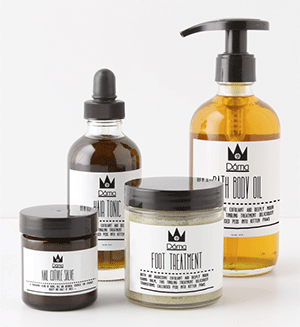When we talk about soap and cosmetic labeling, very often the discussion is about the regulations and the requirements. It’s true that the package label must contain very specific elements, but what about the rest of the label content? What about the “labeling,” defined as the materials and text that goes with the product (like promotional materials and website content)?
On your actual product labels and in your accompanying materials, you have many, many opportunities to present your product and your business to your customers and the world. Just because you can’t say that your soap cures eczema or reduces acne, doesn’t mean you can’t say plenty of other good things about your product and your company.
Branding
The American Marketing Association defines a brand as a:
“name, term, sign, symbol or design, or a combination of them intended to identify the goods and services of one seller or group of sellers and to differentiate them from those of other sellers”
In other words, it’s your identity in the marketplace. There are lots of people out there selling handcrafted soap and cosmetics. What makes your products (and you!) special? What makes you different from the others?
Once you work out your “brand identity,” you can use the space on your labels and promotional materials to push that brand identity as well as the specific products.
Your Voice
Once you have worked out a good “brand identity,” you should identify the “voice” of the brand (if you haven’t already). By that is meant how does your brand sound and speak? A company that markets products for “mature adults” or seniors probably wouldn’t use funky, edgy hip-hop. If your brand identity is sleek and sophisticated, then your voice shouldn’t be backwoods country; on the other hand, if your brand identity centers on your family goat farm and goat’s milk based products, then some country charm might be the way to go.
One of the mistakes that is easy to make is to assume that your own voice is the one that goes with your brand. Maybe it is and maybe it isn’t, but you should work the right voice for your brand (whatever that is) and use it. Of course, it’s easiest, especially if you are a one-man show, to use your voice and to create a brand that goes with it, but it’s not an absolute necessity. If you live in the country on a goat farm, you can still make high-end, sophisticated goat’s milk products. You just have to get the right voice to go with your brand.
Packaging and Labeling
Once you have your brand identity and have determined your voice, your packaging is the vehicle to spread your message (and products) far and wide.
In a broad sense, “packaging” could be considered to include not only the actual way your product(s) are packaged, but also the way you “package” yourself and/or your business for presentation to the world. It could include your website, facebook page, brochures, business cards, even your email address and answering machine message. The FDA considers product “labeling” to be anything that goes along with your product(s).
The physical packaging, the actual label and the label content of your products should forward your brand identity. What you say on the label should be in your “brand voice.” Even with the content required on a soap or cosmetic label, there should be plenty of room to present your brand message.
When it comes to your website, Facebook page, brochures and everything else that is forward-facing (to the public) about you, your business and your products, make sure you are consistent in presenting your brand identity and using your brand voice.
Yes, keep in mind the labeling regulations and watch out for product claims that could cause your product to be classed as a drug. Also remember that claims made for ingredients or in testimonials can be considered claims for the product.
However, just because your product descriptions, ingredient descriptions and testimonials can’t include drug claims, doesn’t mean that they can’t be used to promote your product and your business and to spread your brand identity! Talk (in your brand voice, of course) about how great your products and ingredients are, where the ingredients come from, how they are sourced, how they make your look better (”improved appearance” is a cosmetic claim), how your product is made, how great it feels and/or smells—there is so much you CAN say!
Takeaway
Even though there are regulations about what must go on a product label and what cannot go on a product label, there is still plenty of room for what could or should go on the label and in the accompanying labeling.
With a clear brand identity and voice and well-planned packaging you have many ways and opportunities to get your product(s) and your business to stand out in the crowd.
Oh, and if you’re going for “sleek, sophisticated”, make sure the email address you use with customers isn’t [email protected]!
Additional Resources
For a brief overview on what is required on soap and cosmetic labels, see this Quick Labeling FAQ.
I don’t profess to be an expert on branding by any stretch, so these resources (as well as a general Google search) might be good places to start:
- Brand Packaging: Are Your Reflecting the Right Company Image?
- Maximizing Brand Image Through Package Design
- Rising Above the Noise

Shameless plug!
To really be able to create your own labels that comply with the regulations, get my book from Amazon and use it.
4th Edition – Released March 5, 2025!!!
Or order directly from me (and get a signed copy)!


Leave a Reply